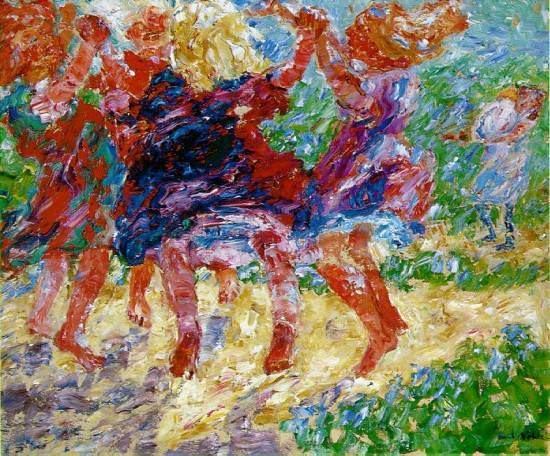Recently, a teacher at my 7-year-old sister’s elementary school suggested that my sister be held back a year in school – because of an unsatisfactory art project.
My father, upset at the suggestion, said, “I could understand if they were concerned because her reading, math or science scores were low, but holding her back over an art project? That is ridiculous!”
My father’s reaction demonstrates the lack of fine arts appreciation that exists in many schools, a condition that was made evident to me while writing about elementary fine arts education in the Champaign-Urbana area. With the Obama administration’s recent proposed budget cut of $22 million to the National Endowment for the Arts, an organization that invests heavily in fine arts education opportunities, I have a growing concern about the future of fine arts education in the United States; I am especially concerned for the future of dance education, which seems to be at the bottom of the totem pole in most school districts.

Too often the fine arts are peppered into a school’s curriculum – used as a break for a child’s homeroom teacher and seen by students as a half hour of fun– because they are not state-tested subjects. Consequently, fine arts teachers may find themselves challenged with inadequate space, funding and even class attendance; Urbana School District 116 (USD 116) Dance and Drama teachers Cara Maurizi and Maggie Kinnamon explained to me that USD 116 homeroom teachers have kept students out of dance and drama classes as a form of punishment.
Though the USD 116 is steps ahead of most Illinois elementary schools in its fine arts programming, dance and drama are still clearly undervalued by comparison to education in music and the visual arts. In USD 116 only six weeks each semester are devoted to dance and drama, respectively, which is an inadequate amount of time for teachers to fully develop concepts in class. When one factors in half hour class periods and inconsistent class attendance, it brings into question the students’ abilities to truly benefit from the courses. It should also be noted that while music and visual art curricula continue through junior high and high school in USD 116, dance and drama courses stop after the fifth grade.
In many schools, such as those in Champaign School District 4, devoting “encore,” or elective, class time to dance education is not even on the radar. But Champaign Unit 4 does value the fine arts, said School Board President Dave Tomlinson; the district’s music, visual art and theatre programs employ award-winning teachers and see consistent student enrollment. So why does dance education get the brushoff?
Tomlinson projected that the reason is a lack of student interest or a lack of funding, or a combination of both. As a result, dance is only offered in Champaign Unit 4 schools as a facet of afterschool clubs or as an element of junior high and high school musical theater classes.
In school districts such as Schaumburg Township School District 54, the district that I attended as a child, dance is introduced as a facet of physical education, but the emphasis often falls on social dancing or, occasionally, on cultural dances. Rarely is any kind of dance history lesson given to contextualize or deepen these dance experiences, which undermines their potential educational values.
With these things in mind, it is time that educators across the United States reassess the value of dance education in schools – and not just at the elementary level. Taking inspiration from the University Primary School (UPS) curricula, I propose that the best way to do this would be through the integration of all genres of the fine arts, including dance and creative movement, into core subjects, and through increased funding for fine arts programs.
The notion that any form of fine arts education is expendable and unnecessary, especially at the elementary level, is one that has been challenged by a multitude of evidence. Many of my sources expressed that children who engage with the fine arts build creative thinking and problem solving skills that help them in “core” subjects such as reading, math and science.
The fine arts are also an excellent way to deepen children’s learning in a variety of subjects; independent dance teacher and UPS employee Donna Warwick cited the ABC song as a prime example of the success of fine arts integration into basic elementary-level curriculum.
Programs like Warwick’s Artsfusion, which merges art appreciation, music appreciation, drama and creative movement, can help students be more confident in the classroom; by expressing their ideas regularly in a creative atmosphere and seeing those ideas actualized, children become comfortable trusting their own intuitions – inside and outside of school.
For students like my little sister who dislike art and therefore rush through assignments in class, the fine arts can reinforce the discipline and class etiquette that is being taught in mainstream classrooms; the integration of dance education into my sister’s curriculum would help her to manage her physical energy in classes where she is required to be still and to focus on a single task.
Outside of an academic perspective, the integration of dance education into core classroom subjects reinforces the notion that physical activity is important in students’ daily lives. The constant introduction of new technologies in the United States has made being sedentary second nature for many U.S. citizens; using class time to model healthy lifestyle choices during such a fundamental stage of human development would be an investment in a healthier future.
And it wouldn’t cost taxpayers a penny.








